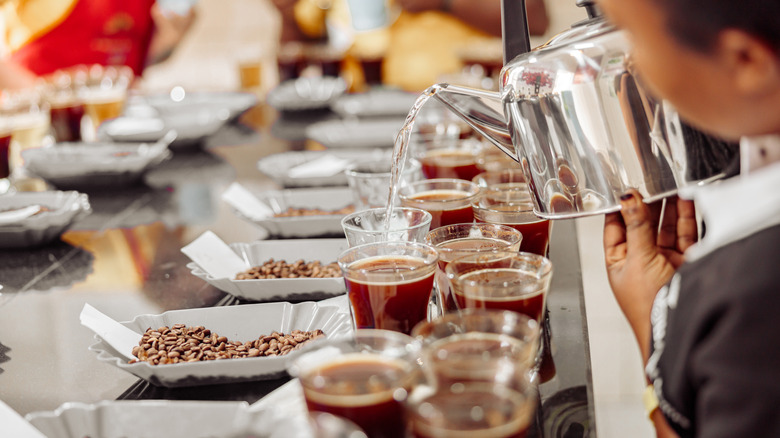What, Exactly, Is The Difference Between Blend And Single-Origin Coffee?
One of the greatest challenges when it comes to drinking coffee is actually finding what you like. A lot of us buy what our parents bought and don't give it much thought beyond that. And, even if you've upgraded your coffee beans over the years, walking into a specialty coffee shop and knowing what to ask for is extremely confusing. Many coffee shops distinguish their roasts simply by either the term "blend" or "single-origin." But how that might impact the flavor of the coffee can be confusing and vague.
What all these terms refer to is where the beans are from. Blends can be sourced from many countries and regions. As an example, Stumptown's signature organic blend Holler Mountain has beans from both Central and Latin America, as well as East Africa. On the other hand, single-origin coffee beans come from only one country and, sometimes, just one specific region —or even farm — within it. For instance, La Colombe offers two Colombian single-origin coffees; but one comes from the Resguardo Inga Aponte farm and the other from Huila, Oparapa.
Blend or single-origin coffee: Which tastes better?
Whether blends or single-origin tastes best is simply a matter of personal taste; so the best thing you can do is find out which traits are associated with each, taste test, and determine what you like. When it comes to blends, the beans tend to be roasted for a longer period of time, thus becoming medium or dark roasts (though this isn't always the case). Roasters put blends under heat for longer because this can help homogenize the flavors of all the beans from various regions, and create a more consistent cup of coffee. Medium and darker roasts take on more chocolate, peanut, and caramel notes, and lean more bitter than sour. A simple rule is that if you like a splash of milk or milk substitute in your coffee, you'll be more drawn to medium- to dark-roasted blends — these are also the standard choices for espresso beans.
Single-origin beans typically come out as lighter roasts or on the low end of medium. Because they come from the same or similar areas, there's no need to prolong roasting in order to make the flavors consistent. As a result, the bean is left with more of its natural fruity acidity, like Blue Bottle's Kenya Nyeri Thunguri Natural which has berry-forward, jammy flavor notes and falls on the very light roast side. Single-origin light roasts do well in delicate brewing methods, like drip or pour-over.

